FULL PARTNERS


ASSOCIATED PARTNERS
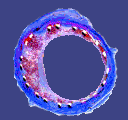 Harvard-MIT Biomedical Engineering Center.
Harvard-MIT Biomedical Engineering Center.

STENT project is supported by the Spanish Minister of Innovation (as a "Plan Nacional
I+D+i BFU2009-09804").
SUMMARY:
Atherosclerosis is a major cause of concern throughout the world leading to millions of deaths annually. Atherosclerotic lesions in the human
vasculature typically develop in the vicinity of branch points and areas of curvature where fluid mechanic disturbances such as non-uniform
laminar flow associated with boundary layer separation, recirculation and stagnation produce severe temporal and spatial gradients in wall
shear stress distributions. We and others have shown that hemodynamic forces are powerful regulators of vascular function on a molecular,
cellular and tissue level. Our bi-national group of investigators link these now classic and accepted areas of investigation to
the emerging field of local vascular drug delivery. Endovascular stents, in particular those that elute drugs are now routinely used to treat
arterial obstructive disease. These metal mesh tubes are expanded in place within diseased arteries where they maintain lumenal patency by pushing
obstructive atherosclerotic plaque aside and then providing a stable support that resists recoil. Drug coatings applied to the stents direct drug
to areas of maximal injury and retard over-exuberant tissue response.
Stent struts do protrude into the lumen and affect local and bulk flow. Our group has demonstrated that these flow effects are powerful determinants
of drug penetration, deposition, distribution and efficacy within the stented artery region. However, there is still a limited understanding of these
drug effects when stent-induced blood local flow disturbances are coupled with large retrograde flow regimes caused due to the inherent presence of a
bifurcation or a curved arterial vessel. Obtaining insights on this complex flow-mediated effect will have profound clinical, regulatory, biological
and engineering ramifications for it asserts that the geometry of the implant and of the vascular bed will affect the pharmacology of local delivery.
By combining in silico and in vitro experiments, we are examining how arterial and device geometries dictate blood flow disruptions after stent placement
and correlate with ultimate biologic response. Lessons learned from these studies could further illuminate the role of hemodynamics in vascular biology
and suggest stent designs and placement for a given vessel geometry (patient-specific) so as to maximize vessel patency and salvage. Furthermore, animal
experiments may be reduced developing in vitro tools as proposed here.
The combined group of investigators from Spain and MIT provides a unique critical mass to perform perform these experiments and analysis. The researchers
from IQS couple the fundamental skills related to chemical engineering, material science and applied mathematics to incorporate finite element
modeling of blood flow and transport phenomena of therapeutic agents as well as to design scaffolds that allow building coronary-like constructs.
The group from Unizar brings expertise in artificial vision, tissue-mechanics modelling and instrumentation to develop a model that allows correlation
of flow effects with tissue function.
The Edelman lab at MIT provides expertise with regards to vascular biology,
in vitro modeling, stent-based drug delivery, computer-aided design modeling and geometry parameterization. Benefiting from her double appointment as
IQS and researcher, Dr. Balcells as principal investigator integrates nicely the combined effort of the committed transatlantic team.
Click the following link to download poster session on Evolving Challenges in Promoting Cardiovascular Health,
November 4 - 5, 2011 | Spain
CosmoCaixa, Barcelona
ECPCH2011.pdf Engineering Physiological Models of Arterial Bifurcation to Expedite
Treatments.
IQS work:
Work at IQS focuses on flow simulations of arteries,
production of prototypes and testing for improvement of Stent designs:
• Simulations focus on the flow pressures and velocities.
 Animated gif of flow velocities on a 3D artery.
Animated gif of flow velocities on a 3D artery.
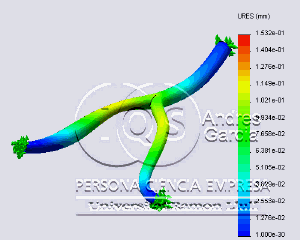 Animated gif of artery expansion due to internal flow pressure.
Animated gif of artery expansion due to internal flow pressure.
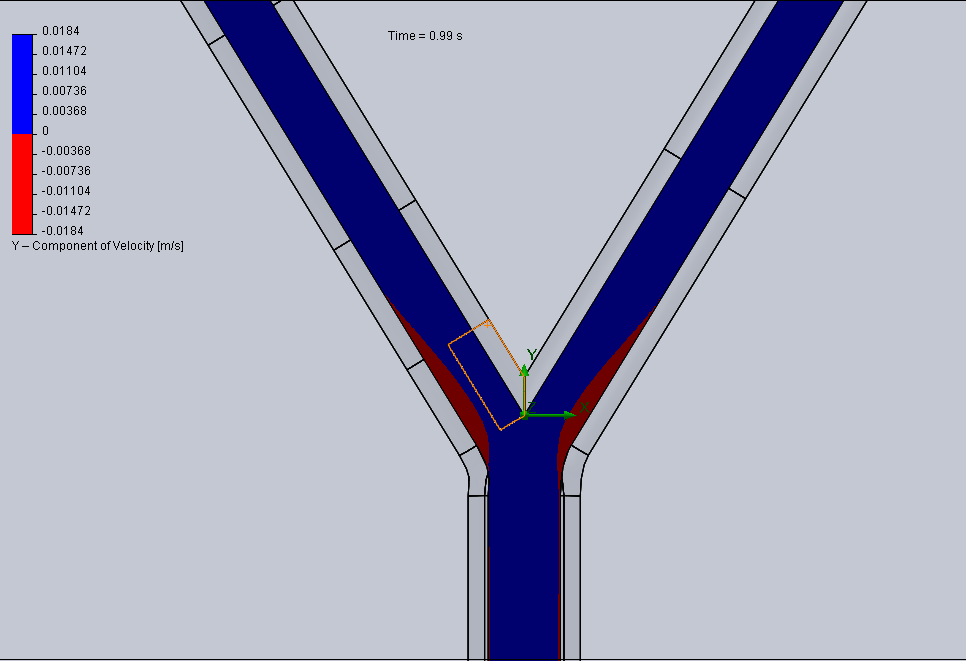 Picture of recirculation of blood.
Picture of recirculation of blood.
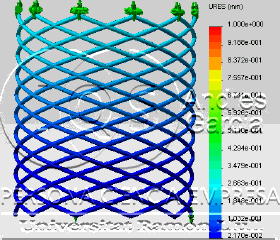 Animated gif of Stent deploy.
Animated gif of Stent deploy.
• Prototypes are manufactured using several techniques. CAD is integrated to generate simulations, CNC of moulds and STL files for 3D printing.
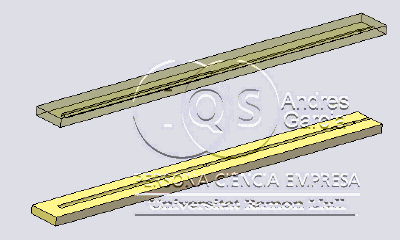 Animated gif of theoretical section change prototype with PEG.
Animated gif of theoretical section change prototype with PEG.
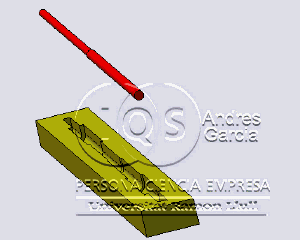 Animated gif of theoretical section change prototype with PEG and silicone.
Animated gif of theoretical section change prototype with PEG and silicone.
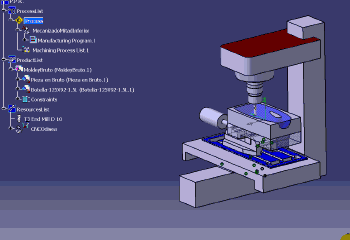 Animated gif of CNC manufacturing of prototypes.
Animated gif of CNC manufacturing of prototypes.
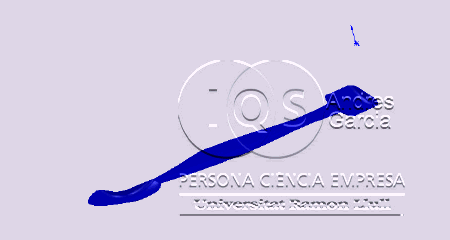 Animated gif of Additive Manufacturing of prototypes.
Animated gif of Additive Manufacturing of prototypes.
• J. Martorell; P. Santomá;J. J. Molins; A. A. García-Granada; J. A. Bea; E. R. Edelman;M. Balcells
"Engineered arterial models to correlate blood flow to tissue biological response"
902497 - Annals of the New York Academy of Sciences
Vol.1254 N.--- Pag: 51-56 Year: 2012 ISSN: 0077-8923
• Martorell, J.; Molins, J.J.; García, A.; Palmés, E.; Bea, J.A.; Edelman, E.; Balcells, M.
"Biophysical property assesment of new endovascular devices in artificial vessel"
201746 - TECNICAS ENDOVASCULARES
Vol.14 N.1 Pag: 3614 final: 3617 Year: 2011 ISSN: 1138-4379
• J. Martorell, P. Santomá, J. J. Molins, A. A. García-Granada, E. R. Edelman, M. Balcells
"What can we learn from endovascular devices prior to implantation?"
International Symposium on Endovascular Therapeutics (SITE)
Vol. --- N.--- Pag: --- Year: 2013 Place of publication: Barcelon (Spain) Tecnicas endovasculares
For any queries do not hesitate to contact:
Andres-Amador Garcia-Granada:
Via Augusta 390, 08017 Barcelona, Spain
Tel.: +34 932 672 083 / Tel.Cen.: +34 932 672 000 -ext.283
Fax: +34 932 056 266
andres.garcia@iqs.edu
www.iqs.edu

Click here for a complete list of Andres-Amador Garcia-Granada Publications.


 Harvard-MIT Biomedical Engineering Center.
Harvard-MIT Biomedical Engineering Center.

 Animated gif of flow velocities on a 3D artery.
Animated gif of flow velocities on a 3D artery.
 Animated gif of artery expansion due to internal flow pressure.
Animated gif of artery expansion due to internal flow pressure.
 Picture of recirculation of blood.
Picture of recirculation of blood.
 Animated gif of Stent deploy.
Animated gif of Stent deploy.
 Animated gif of theoretical section change prototype with PEG.
Animated gif of theoretical section change prototype with PEG.
 Animated gif of theoretical section change prototype with PEG and silicone.
Animated gif of theoretical section change prototype with PEG and silicone.
 Animated gif of CNC manufacturing of prototypes.
Animated gif of CNC manufacturing of prototypes.
 Animated gif of Additive Manufacturing of prototypes.
Animated gif of Additive Manufacturing of prototypes.
